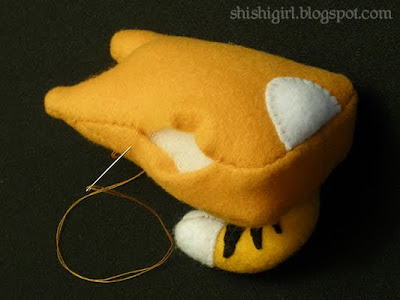家紋:かもん、kamon, meaning "house" (家) + "crest" or "coat of arms" (紋)
Alternative terms include:
紋章:もんしょう、monshou, "coat of arms badge"
紋所:もんどころ、"coat of arms place" (?)
...or simply mon in conversation.
some famous rulers and their family crests; the bottom right crest is that of the Tokugawa family
If you have any sustained interest in Japan, you've likely seen kamon symbols somewhere before. They are embroidered or dyed on the chest of formal kimono, on the eaves of traditional roofing, printed on noren curtains, on flags of temples and shrines, and can generally be spotted in many other places.
on formal kimono
this curtain at a jinja (Shinto shrine) displays the kamon of two families
the "dove" mon at Morooka Kumano Jinja (師岡熊野神社)
lanterns painted with kamon
shirts decorated with kamon are a popular item with the younger generations: which family's kamon they display is not necessarily important...
...while keychains with one's family mon are popular among the middle generations; many services exist in Japan that will personalize lighters, cellphones, portable game systems, etc. with any mon you like
a kamon on a public building, in this case a community meeting center
a chrysanthemum kamon appears on the Japanese passport; the 16-petal chrysanthemum crest is a symbol of Japan as a sovereign nation
Kamon symbols, much like the lions and eagles of heraldry, are powerful graphic elements. Unlike western heraldry, however, kamon are uncomplicated and geometric. They were originally simplified by the constraints under which they were designed, used, and cataloged.
All traditional kamon are plain black and white, with no intermediate tones or shading. This two-tone limit makes them much easier to reproduce in a variety of media, as well as bold enough to be seen clearly on flags across the ancient battlefield. Most kamon are also round, and thus all the easier to fit on variously-shaped surfaces and items. Lastly, the vast majority of kamon have one or more axes of symmetry, sometimes as many as 14 or 16.
the kamon of the Imperial Family of Japan 十六弁八重表菊紋, or jyuurokuben-yae-hyou-kiku-mon, "16-petal double layer displayed chrysanthemum crest"
Common motifs found in traditional kamon include flowers, leaves, birds, turtles, butterflies, kanji, or representational abstract shapes, but there are always exceptions.
Likewise, many kamon rely on the same popular icon, but present it in markedly different ways to distinguish each from the other. Closely related kamon may (but do not always) belong to offspring of a famous family or separate families who established themselves in similar professions.
selected kamon variations on the kikyou (Chinese bellflower)
If you have a traditional Japanese name, there are books and websites whereby you can look up your family's kamon symbol. Some people even design an original kamon to represent their own family in modern times. I had a student who made his own stamp of a kamon with a Super Famicom controller ringed by its cord... he used it on his homework. :3
If you like history, this article on Epoch Times gives a brief overview of the origins of the kamon system. There are also a few modern, for-fun Kamon Generators by Ayataka beverage group - you give your name and birthdate, and they assign you an original kamon (you'll need Japanese text enabled on your machine to use the input form).
a modern kamon design, appropriate for Arizona :3
Here are some sites that provide a catalogue of the traditional kamon:
Kamon Shijou (Kamon Marketplace by BBPlus)
You can search by keyword, browse by subject, or browse alphabetically (hiraganically?) by kamon name. (You can also order stickers, keychains, pins, and other goods with any kamon you like... if you know how to navigate in Japanese.)
Japanese Clip Art
An English site with a selection of the more famous kamon (and other images) for free download. Yay!
Kamon Japan
A site that offers display plaques and castings with the kamon of famous rulers... has adorable little illustrations of those rulers, too. XD
楽しみして、ね! ^_^























